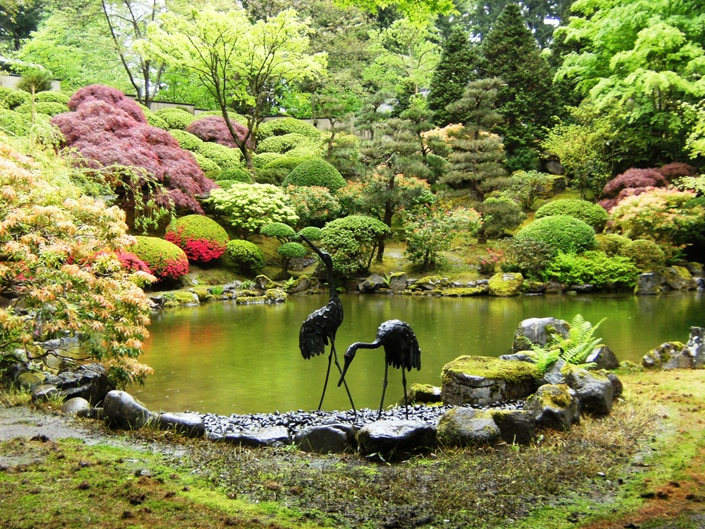
There is no denying that the Asian cultures have had a major impact on the development and growth of Oregon. Almost every segment of Oregon culture has a unique Asian element.
Pendleton Underground
Beneath the city of Pendleton lies a secret underground city. Chinese immigrants dug the tunnels beneath the city streets and built their own city.
Today, the Pendleton Underground is open for guided tours that explain how the Chinese were very important to the development of the American West. On the tour, you visit the Shamrock Card Room, the Empire Ice Cream Parlor, Hop Sing’s Chinese Laundry, and the Empire Meat Market. You also explore the passageway to the Prohibition era Card Room. Also below ground is the Chinese living quarters and an opium den. There is also a Chinese jail.
Lan Su Chinese Garden
The Lan Su Chinese Garden is cherished as a gift from Portland’s sister city Suzhou in the Chinese province of Jiangsu. The province is world famous for its outstanding Ming Dynasty Gardens. Portland’s Lan Su was constructed by Chinese artisans from Suzhou and is thought to be the most authentic Chinese garden not located in China.
Visiting the garden transports to you another time, an ancient time in another world; it is as if a gate opened for you to see China as it was 2,000 years ago with architecture, art, design and nature in nearly perfect balance. Lan Su is living proof that even today, Oregon continues to be richly influenced by Asian cultures.
Portland Japanese Garden
It is no coincidence that the Portland Japanese Garden is considered one of the most authentic Japanese garden outside of Japan.
Located in the west hills of Portland, this 5.5-acre garden is a respite of tranquility from the bustle of the city. There are actually five separate gardens here and each one is a superb example of how the Japanese use three essential elements in creating a Japanese garden. The skeleton of the gardens is the stones used in the landscaping, water is the force that is life giving and plants represent nature as depicted by the four seasons.
A well-designed Japanese garden is asymmetrical in shape, and the sum of the design elements of stone, water and plants far exceed their individuality. Visit the Flat Garden, The Strolling Pond garden, The Tea Garden, The Natural Garden and the Sand and Stone Garden and you can see how the design elements work so well together. This sense of harmony infuses Oregon life. Oregon is an accepting culture that treasures all things different but natural.
Editor’s note: For more on Oregon’s rich cultural and heritage attractions, visit CulturalOregon.com.
